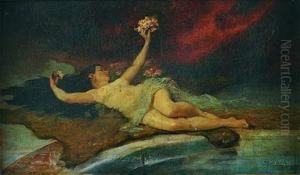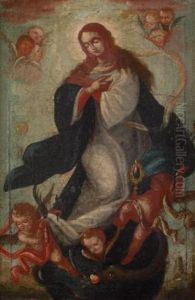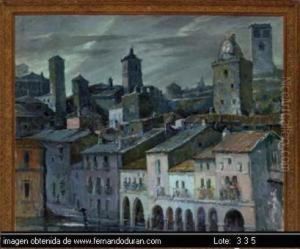Jose Maria Rodriguez Acosta Paintings
José María Rodríguez-Acosta was a Spanish painter, born on October 26, 1878, in Granada, Spain. He was an important figure in Spanish art during the late 19th and early 20th centuries, particularly known for his contributions to the Symbolist movement in Spain. His works are characterized by a strong use of color, intricate composition, and often contained allegorical or mythological themes.
Rodríguez-Acosta initially trained at the School of Fine Arts in Granada and later moved to Madrid, where he further developed his artistic skills. In Madrid, he was exposed to the works of contemporary Spanish artists as well as the rich collections of the Prado Museum, which had a significant impact on his artistic development.
Throughout his career, Rodríguez-Acosta traveled extensively, which influenced his style and subject matter. He lived in Paris for a time, where he was exposed to the avant-garde movements of the time, such as Impressionism and Post-Impressionism, which would leave a lasting mark on his work. Despite these influences, he retained a distinct personal style that combined traditional Spanish elements with modern European artistic trends.
One of Rodríguez-Acosta's most notable contributions to the arts was the creation of the Rodríguez-Acosta Foundation, established in his birth city of Granada. The foundation is housed in the Carmen Blanco, a traditional Spanish villa that the artist transformed into a studio and cultural center. Today, the foundation serves as a museum and research center, preserving the artist's work and legacy.
José María Rodríguez-Acosta passed away on April 29, 1941, in Granada. His artistic legacy is remembered for its unique blend of symbolism, modernism, and Spanish cultural motifs. His works are housed in various museums and collections in Spain and continue to be studied and appreciated for their contribution to Spanish art history.



